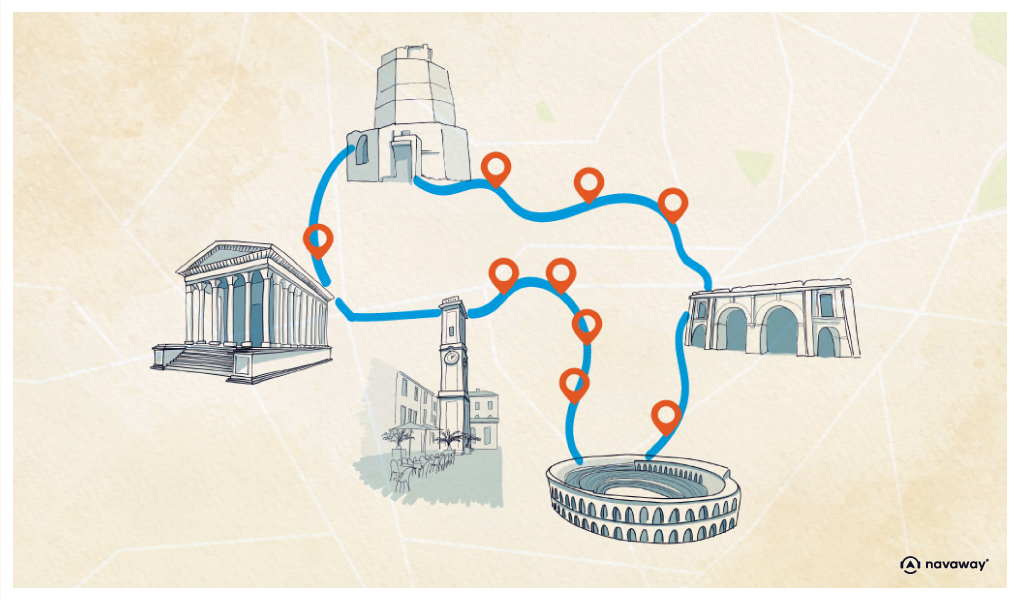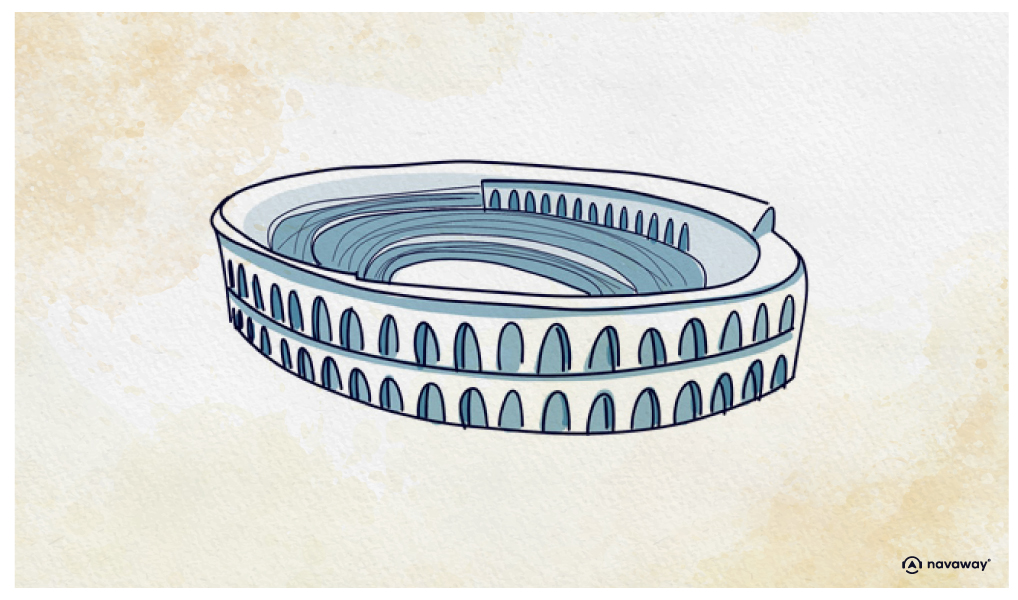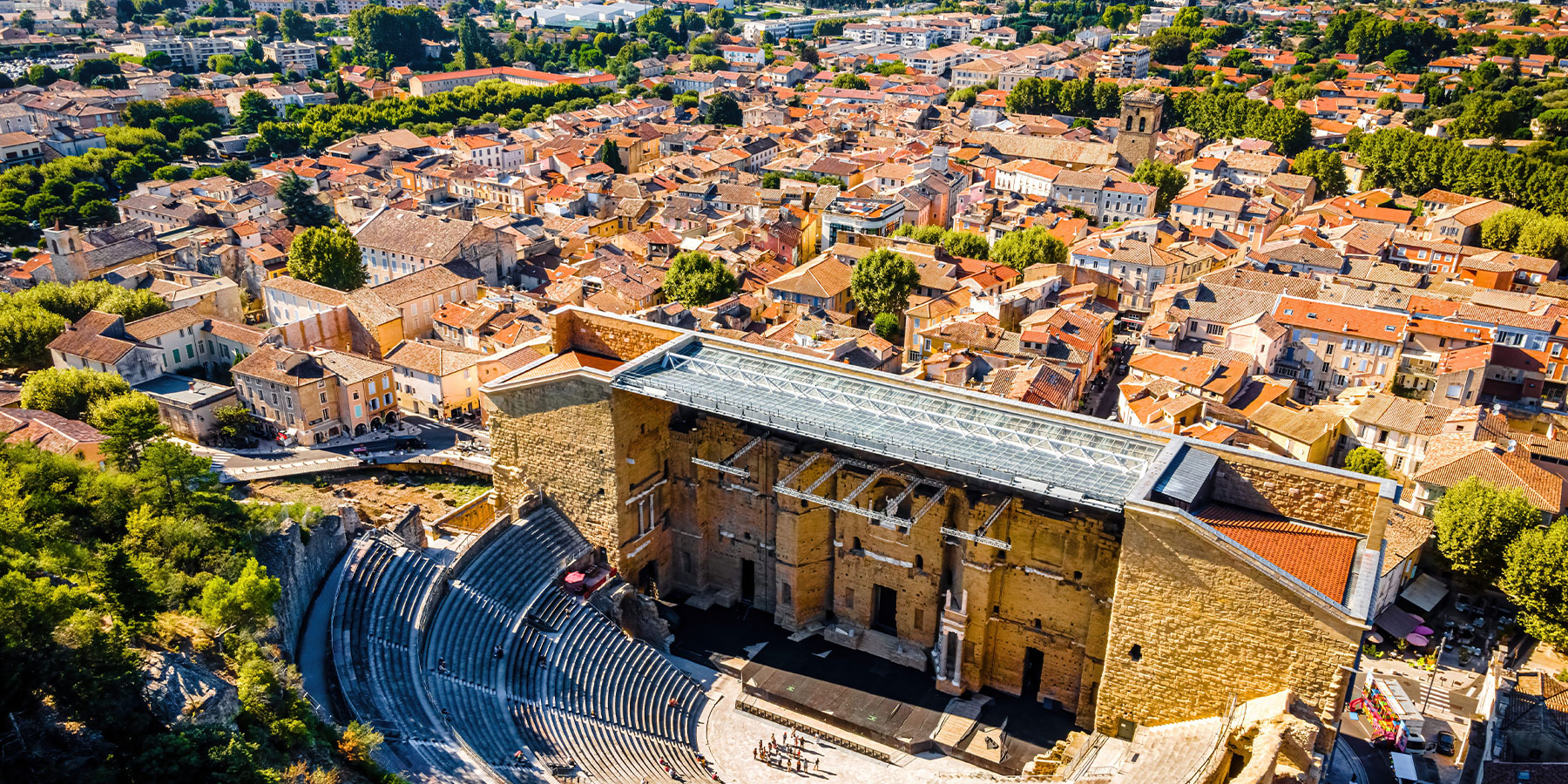
Nîmes Arena

This point of interest is available as audio on the tour: Visit Nîmes, The French Rome
The Nîmes Arena is the best-preserved Roman amphitheatre in the world! From the 1st century onwards, over 23,000 spectators gathered here to watch gladiator fights! The Nîmes arena is 133 metres long and 101 metres wide, with a central arena measuring 68 metres long and 38 metres wide. It can be compared to the arena in Arles and even the Colosseum in Rome, which were built at the same time. Unlike the Colosseum in Rome, which had 4 floors, the façade was 21 metres high and had 2 floors. The stands were divided according to social status. The most privileged were seated at the bottom, while the most modest were seated in the last rows at the top. They were never mixed, as every group had its own gallery, or vomitories as they were called, to enter and exit the stands. These vomitories were a remarkable system, as they allowed spectators to come and go in record time. Everybody could see the arena, thanks to the elliptical shape of the building. In those days, people came to watch gladiator fights. These were volunteers who came to fight for glory or money, but there were also animal fights and fights between slaves to entertain the public. The arena is so well preserved because even after the ban on gladiator fights in 404, it was used continuously for two millennia. It was first converted into a fortress by the Visigoths. To achieve this, they added a few towers, dug a moat and filled in the arcades. It was later used as a fortified village, featuring two churches and over 200 houses, where the inhabitants came to take refuge during periods of insecurity, such as the Great Invasions. That’s right, a whole village inside the arena! You can’t imagine what living conditions were like… To cut a long story short, it was in the early 16th century that King Francis I attempted to restore the monument to its former splendour. However, at the time, he was the only one who cared, and in the end nothing was done. It wasn’t until more than 2 centuries later, at the end of the 18th century, that people began to show an interest in restoring the arena. At the same time, the town’s fortifications were demolished to make it more attractive and airy. They were completely cleared in 1812, and it was not until the end of the 19th century that restoration work really began. In fact, restoration work is still ongoing today! To this day, efforts are still being made to restore the stands and facades to their original splendour. Nowadays, the Nîmes arena is visited by thousands of people, but it also hosts bullfights, sporting events and concerts, attracting over 200,000 spectators a year to its stands. From Elton John and Radiohead to Daft Punk, many of the world’s greatest artists have had the chance to perform in one of the most impressive remains of the Gallo-Roman period, which is still in an outstanding state of preservation. The Nîmes Arena was also one of the twenty most important amphitheatres in the Roman world. The arena features iconic sculptures such as gladiators fighting and the Roman she-wolf suckling Remus and Romulus. As you walk in, look out for the two small sculptures above the porch: these are bulls, which were already on display in the arena in ancient times! So take the time to explore the walls, which have a rich history behind them, and venture into the arena for a real leap back in time.


Discover Nîmes with app
An interactive guide through the most beautiful streets, squares, and districts
26 fun audioguides full of historical facts, anecdotes, and legends





Comments